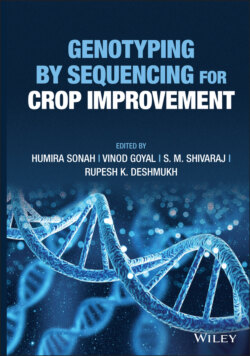Читать книгу Genotyping by Sequencing for Crop Improvement - Группа авторов - Страница 33
1.7.2 Role of Molecular Markers in Germplasm Characterization
ОглавлениеMolecular markers are also used in DNA fingerprinting for varietal identification, germplasm evaluation, phylogenetic and evolutionary studies, etc. The molecular marker‐based DNA fingerprinting data are useful for the characterization of plant germplasm accessions, quantification of genetic diversity, and protection of proprietary germplasm (Smith and Smith 1992). Molecular markers have been utilized to distinguish closely related crop cultivars (Melchinger et al. 1991; Paull et al. 1998), in sex identification of dioecious plants (Parasnis et al. 1999). They are also used to understand evolutionary relationships within and between species, genera, or higher taxonomic groups. Such studies involve large number of markers to study similarities and differences among taxa (Paterson et al. 1991). Although phylogeny has been established for many plant species based on morphological markers, biochemical markers, and chromosome homology, the genetic markers have enhanced our understanding of phylogeny. In one important study, DNA‐based markers enabled the designation of GG for Oryza granulata and HHJJ for Oryza ridleyi (Aggarwal et al. 1997 ).
